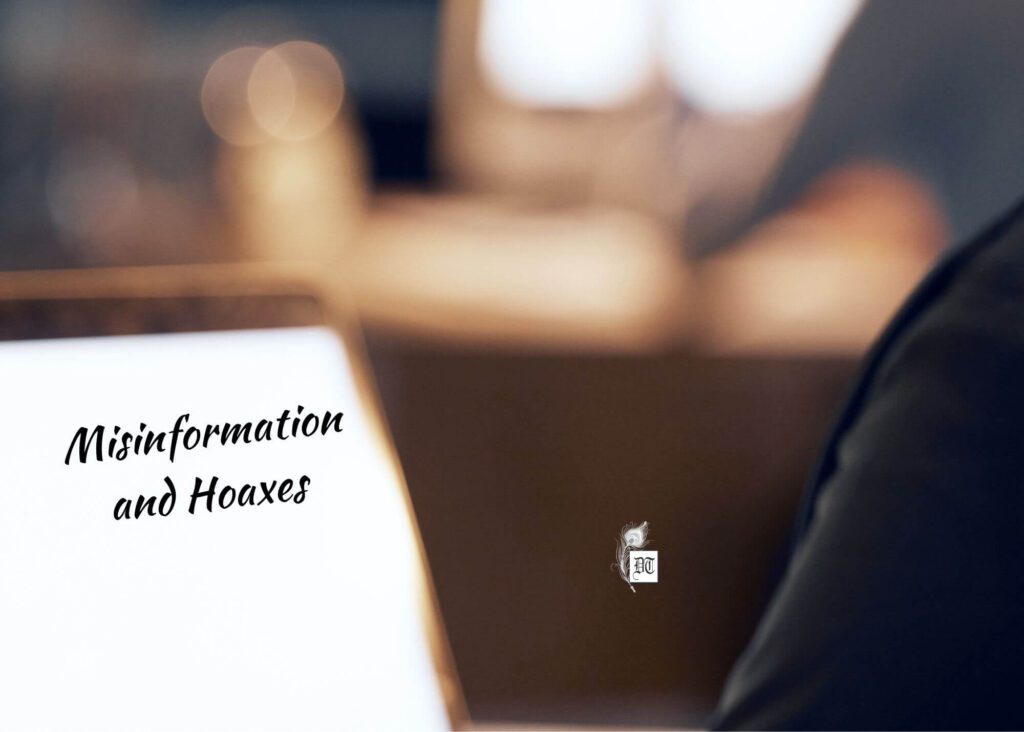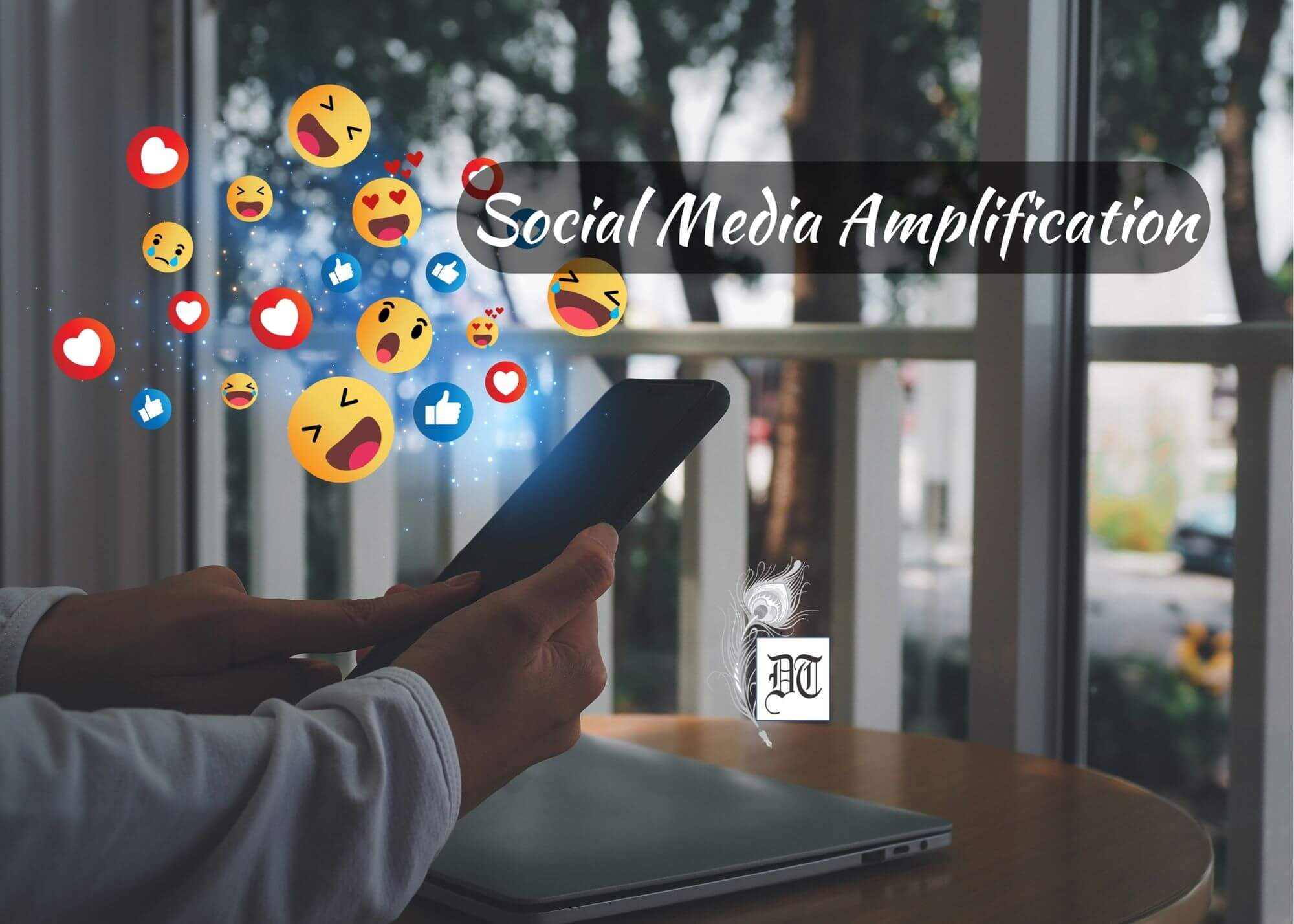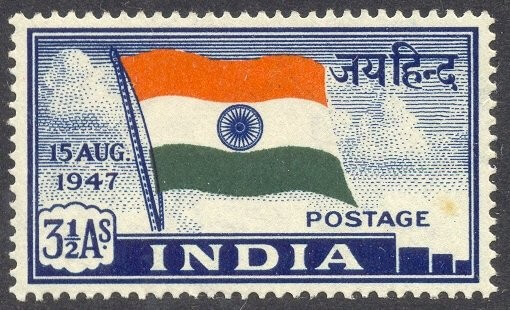User-generated content (UGC) enhances citizen journalism, promoting inclusivity but posing journalistic standards and bias risks. Collaborative solutions like “citizen desks” balance inclusivity and accuracy, elucidates Arindam. in the second part, exclusively for Different Truths.

User-generated content (UGC) has ushered in a new era of information dissemination, prominently seen in the realm of citizen journalism. This phenomenon, although providing exceptional prospects for varied perspectives to contribute to the news cycle also introduces a distinct array of obstacles. This discussion explores the transformative power of UGC-facilitated citizen journalism, acknowledging its advantages, examining challenges, and delving into collaborative solutions to maintain journalistic integrity.
Empowering the Grassroots
The advantage of citizen journalism is its ability to democratise information. Bowman and Willis (2003) emphasise this democratising effect, illustrating how ordinary citizens can actively participate in news reporting. The inclusivity of UGC allows for a broader representation of events, offering diverse perspectives on subjects that conventional news outlets might overlook. Citizen journalists, often present at the grassroots level, bring immediacy and intimacy to their reporting, capturing local nuances and perspectives that might escape the attention of professional journalists.
Challenges in the Democratisation of News
Despite its advantages, the democratisation of news through UGC and citizen journalism poses challenges, with one of the foremost concerns being the potential lack of journalistic standards. Allan and Thorsen (2009) caution against the absence of formal training and ethical guidelines, which may lead to the dissemination of inaccurate or biased information. Unlike professional journalists who adhere to established codes of conduct and fact-checking processes, citizen journalists may lack the necessary skills to verify information, thereby risking the spread of misinformation. Balancing the democratisation of news with the need for reliable and accurate information becomes imperative.
The Impact of Social Media Platforms
The rise of social media platforms has significantly amplified the influence of citizen journalism.
The rise of social media platforms has significantly amplified the influence of citizen journalism. Platforms like Twitter, Facebook, and YouTube serve as powerful conduits for individuals to share their observations and experiences directly with a global audience. While this immediacy allows for real-time reporting and greater visibility for grassroots issues, it also intensifies the challenge of verifying the authenticity of the information shared. The virality of information on social media requires a more vigilant approach to ensure accuracy and prevent the propagation of false narratives.
Collaborative Solutions
Recognising the challenges associated with citizen journalism, efforts have been made to establish collaborative platforms that bring together citizen reporters and professional news organizations. Initiatives such as “citizen desks” within newsrooms aim to capitalise on the strengths of both citizen journalists and traditional reporters. This collaborative approach seeks to maintain the benefits of citizen journalism, including diverse perspectives and on-the-ground insights, while introducing a level of editorial oversight and fact-checking to enhance the credibility of the information being reported.
Striking a Balance
… the intersection of UGC and citizen journalism has opened new avenues for various voices to contribute to the global information landscape.
Therefore, the intersection of UGC and citizen journalism has opened new avenues for various voices to contribute to the global information landscape. The democratisation of news reporting has the potential to address gaps in coverage, offer unique perspectives, and highlight grassroots issues. However, the lack of journalistic standards poses a significant challenge. Striking a careful balance between inclusivity and accuracy is crucial in navigating the complexities of the era of citizen journalism. Collaborative solutions that merge the strengths of citizen reporters with the editorial oversight of traditional news organisations can pave the way for a more robust, accurate, and diverse information ecosystem.
Trust and Engagement: Building Credibility in the Digital Landscape
UGC has become a powerful force in the digital realm, encompassing a wide array of materials such as reviews, comments, and social media posts. Credibility, a cornerstone of UGC, is intricately tied to the establishment of trust between content creators and their audience. This discussion explores the pivotal role of audience engagement in building trust and enhancing the credibility of UGC, while also addressing the challenges associated with maintaining trust in the face of misinformation.
Building Trust through Engagement
The connection between audience engagement and perceived credibility in UGC is well-established (Lewis et al., 2013). When content creators actively engage with their audience through mechanisms such as responding to comments, addressing concerns, and creating a sense of community, they contribute to the development of a trustworthy relationship. Lewis et al. (2013) underline the positive correlation between audience engagement and the perceived credibility of UGC. By actively involving the audience, content creators foster an environment where users are more likely to trust the content they consume.
…the incorporation of user feedback into the processes of content creation strengthens the connection between creators and their audience.
Effective engagement strategies encompass various interactive features such as polls, Q&A sessions, and live streams that invite audience participation. Moreover, the incorporation of user feedback into the processes of content creation strengthens the connection between creators and their audience. Social media platforms serve as dynamic spaces for these interactions, offering creators diverse opportunities to connect with their audience in real time.
Challenges of Establishing and Maintaining Trust
Despite the opportunities for building trust through engagement, the digital landscape poses challenges in establishing and maintaining trust, with misinformation being a significant threat (Bakir and McStay, 2018). The rapid spread of content through online channels in the age of information overload creates a vulnerability in trust. Misinformation can swiftly erode credibility, undermining the efforts invested in building trust through engagement.
Addressing this challenge requires a comprehensive approach. Content creators must prioritize fact-checking to ensure the accuracy of the information they share. Transparent information about sources and methodologies can further contribute to the perceived credibility of UGC. Platforms hosting UGC should implement robust mechanisms for detecting and addressing misinformation promptly.
Mitigating the Impact of Misinformation
Fostering media literacy among audiences is essential in mitigating the impact of misinformation on trust. Educating users on how to critically evaluate information, discern reliable sources, and identify potential biases empowers them to make informed judgments about the credibility of UGC. Collaborative efforts between content creators, platforms, and users are crucial to collectively navigate the challenges posed by misinformation.
Enhancing Credibility through Proactive Measures
Hitherto, the opportunity to enhance the credibility of UGC through audience engagement is significant. By actively involving their audience in the content creation process and fostering a sense of trust, content creators lay a solid foundation for the perceived reliability of their content. However, the constant threat of misinformation requires a proactive approach. Fact-checking, transparency, and media literacy initiatives are essential components in maintaining and safeguarding the trust established through engagement. The ongoing dialogue between content creators, platforms, and users will play a pivotal role in navigating the evolving landscape of UGC credibility in the digital age.
Challenges Associated with UGC: Misinformation and Hoaxes
UGC has become an integral part of the digital landscape, enabling users to create and share content across various platforms. While UGC fosters user engagement and diverse perspectives, it also presents challenges, with one of the most significant being the proliferation of misinformation and hoaxes. This issue poses a threat to the credibility of content on UGC platforms, impacting individuals, communities, and even societies at large.
Misinformation on UGC Platforms
Misinformation refers to the dissemination of inaccurate or misleading information that can lead to false beliefs or perceptions. UGC platforms, such as social media sites, forums, and collaborative content creation platforms, are susceptible to the rapid spread of misinformation due to their open nature and the ease with which content can be shared. Users often contribute to the dissemination of misinformation unknowingly, sharing content without fact-checking or verifying its accuracy (Vosoughi et al., 2018).
The social dynamics of UGC platforms contribute to the virality of misinformation.
The social dynamics of UGC platforms contribute to the virality of misinformation. Content that is emotionally charged or aligns with pre-existing beliefs tends to gain traction quickly, creating echo chambers where false information is reinforced. Additionally, the speed at which information travels on these platforms can outpace fact-checking efforts, allowing misinformation to reach a wide audience before corrections are made.
Hoaxes and Their Impact

Hoaxes are deliberate attempts to deceive and trick users, often for malicious purposes. These can range from fabricated news stories to manipulated images or videos. UGC platforms provide fertile ground for the creation and dissemination of hoaxes due to the lack of stringent content verification mechanisms. Hoaxes can cause panic, sow discord, and even influence public opinion.
The challenge with hoaxes on UGC platforms lies in their ability to masquerade as legitimate content. Advanced techniques, such as deepfake technology, enable the creation of realistic-looking fake videos that can deceive even discerning users. The implications of hoaxes extend beyond individual misinformation, affecting trust in the platform itself and eroding the credibility of user-generated content.
Addressing the Challenges
Addressing the challenges associated with misinformation and hoaxes on UGC platforms requires a multi-faceted approach. First and foremost, platforms must invest in robust content moderation systems that leverage artificial intelligence and machine learning algorithms to detect and flag potentially misleading or false content. Additionally, promoting media literacy among users is crucial to empower them to critically evaluate the information they encounter on these platforms.
Collaboration between UGC platforms, fact-checking organisations, and regulatory bodies is essential… for content verification.
Collaboration between UGC platforms, fact-checking organisations, and regulatory bodies is essential to establish industry-wide standards for content verification. Transparent reporting mechanisms for users to flag potentially misleading content and swift responses to such reports can help mitigate the spread of misinformation.
Thus, the challenges associated with misinformation and hoaxes on UGC platforms highlight the need for a collective effort to foster a more responsible digital ecosystem. As user-generated content continues to play a significant role in shaping public discourse, it is imperative to implement proactive measures to curb the spread of false information. By addressing these challenges, UGC platforms can enhance the credibility of the content shared on their platforms and contribute to a healthier online information environment.
Ethical Concerns: Privacy Infringement and Manipulation
UGC has become an integral part of the digital landscape, allowing individuals to create, share, and interact with content across various online platforms. However, the widespread adoption of UGC has raised ethical concerns, particularly regarding privacy infringement and the potential for manipulation (Singer et al., 2011). This discussion explores these ethical concerns in detail, shedding light on the challenges and implications associated with the use of UGC.
Privacy Infringement
One of the foremost ethical concerns surrounding UGC pertains to privacy infringement. Users willingly contribute personal information and content to online platforms, assuming a level of privacy in exchange for participation. However, the sheer volume of UGC and the extensive data collection practices employed by platforms often result in unintentional privacy breaches. Personal details, preferences, and behaviours are at risk of being exploited, leading to concerns about identity theft, unauthorized access, and surveillance (Kaplan & Haenlein, 2010).
Platforms may employ algorithms to analyse UGC, extracting insights into user behaviour and preferences. While this can enhance user experience, it also raises questions about the responsible use of such data. Striking a balance between personalisation and privacy is crucial to maintaining trust among users and ensuring ethical practices in UGC-driven ecosystems (Zimmer, 2010).
Manipulation
The potential for manipulation in UGC poses another significant ethical concern. Given the vast reach and influence of UGC, malicious actors may exploit these platforms to disseminate misinformation, fake news, or engage in propaganda campaigns (Vosoughi et al., 2018). The viral nature of UGC can amplify the impact of such manipulative content, potentially shaping public opinion and perceptions.
Algorithms and recommendation systems…may inadvertently contribute to the spread of biased or polarising content.
Algorithms and recommendation systems, designed to maximise user engagement, may inadvertently contribute to the spread of biased or polarising content. This raises questions about the responsibility of platform developers and the need for ethical guidelines to mitigate the unintended consequences of UGC algorithms (Diakopoulos, 2016).
Addressing Ethical Concerns
To address the ethical concerns associated with UGC, a multi-stakeholder approach is necessary. Online platforms, regulatory bodies, and users themselves all play a role in fostering a more ethical UGC environment.
Platforms can implement robust privacy policies, transparent data collection practices, and stringent content moderation measures to protect user privacy and prevent the spread of harmful content (Van Dijck, 2013). Additionally, developers can refine algorithms to prioritize content accuracy and diversity over sensationalism.
Regulatory bodies should establish and enforce guidelines that promote responsible UGC practices. This includes measures to hold platforms accountable for privacy breaches and manipulative content dissemination. Collaborative efforts between the private sector and regulatory bodies are essential to strike a balance between innovation and ethical considerations (Nissenbaum, 2009).
Finally, the ethical concerns surrounding UGC, particularly in terms of privacy infringement and manipulation, highlight the need for a comprehensive and collaborative approach. As UGC continues to shape the digital landscape, stakeholders must work together to establish and enforce ethical standards that safeguard user privacy, ensure content accuracy, and promote responsible platform behaviour. By addressing these concerns, the potential benefits of UGC can be harnessed without compromising the ethical principles that underpin a healthy and trustworthy online environment.
Quality Control UGC and its Legal Implications
UGC has become a significant source of information in the digital age, with individuals contributing content on various platforms. However, ensuring the quality of UGC poses a significant challenge for news organizations and other entities relying on such content. Quality control is vital to maintain accuracy and reliability, given the diverse nature of user-contributed content.
Quality control in UGC involves several dimensions, including accuracy, credibility, and relevance. Hermida et al. (2012) highlight the challenges of ensuring quality in UGC, emphasising the varying levels of accuracy and reliability across different user-generated pieces. Unlike traditional journalistic content, which typically undergoes editorial scrutiny, UGC lacks a standardised validation process. The democratisation of content creation, while empowering, introduces the risk of misinformation and low-quality contributions.
To address these challenges, news organisations and platforms incorporating UGC must implement robust quality control measures. This can include the use of algorithms and artificial intelligence to assess the credibility of sources, fact-checking mechanisms, and community reporting systems where users can flag potentially inaccurate content. Collaborations with third-party fact-checking organisations can also enhance the reliability of UGC.
Legal implications further complicate the landscape of UGC.
Legal implications further complicate the landscape of UGC. McKenna (2013) points out that UGC may involve legal complexities, such as copyright infringement and defamation. News organisations must navigate the legal minefield to avoid legal repercussions resulting from user-contributed content. The lack of editorial oversight on UGC means that content creators may inadvertently or intentionally violate copyright laws or engage in defamatory practices.
To mitigate legal risks, news organisations should implement clear guidelines for user contributions, emphasising compliance with copyright laws and discouraging defamatory content. These guidelines should be communicated transparently to users, outlining the consequences of violating legal standards. Additionally, platforms can employ content moderation tools to identify and address potential legal issues proactively.
Education and awareness play a crucial role in both quality control and legal compliance regarding UGC. Users should be informed about the importance of accuracy and legality in their contributions. News organizations can conduct outreach campaigns to educate their audience on discerning reliable information and understanding the legal boundaries of content creation.
Therefore, ensuring the quality of UGC requires a multifaceted approach that addresses both content reliability and legal implications. Quality control measures, including algorithmic assessments, fact-checking mechanisms, and community reporting systems, can enhance the accuracy and credibility of user-generated content. Simultaneously, legal considerations, such as copyright infringement and defamation, demand clear guidelines and proactive moderation to prevent legal complications. By combining technological solutions, transparent guidelines, and user education, news organizations and digital platforms can harness the power of UGC while minimising its associated risks.
Algorithmic Bias in UGC: Navigating Challenges
User-generated content (UGC) has become an integral component of contemporary journalism, providing a diverse array of perspectives and real-time updates. However, the algorithms employed in curating and displaying UGC on social media platforms introduce a nuanced challenge—algorithmic bias. This bias has the potential to shape user experiences, influence content visibility, and inadvertently reinforce existing perspectives (Diakopoulos, 2016).
Algorithmic bias in UGC platforms is a multifaceted issue.
Algorithmic bias in UGC platforms is a multifaceted issue. Social media algorithms use complex machine learning models to curate content based on various factors such as user engagement, relevance, and recency. While these algorithms aim to enhance user experience, they can inadvertently perpetuate biases present in the data used for training.
Research by Nicholas Diakopoulos (2016) highlights how algorithmic bias can manifest in several ways. One key aspect is the “filter bubble,” where users are exposed to content that aligns with their existing beliefs and preferences. This phenomenon occurs when algorithms prioritise content like what users have engaged with in the past. Consequently, users may be shielded from diverse perspectives, leading to a reinforcement of their existing worldview.
Moreover, algorithmic bias can also result in the unequal visibility of UGC. Certain voices and perspectives may be marginalised or overshadowed due to algorithmic prioritisation, hindering the goal of inclusive and diverse storytelling in social journalism. This issue is particularly pertinent in the context of news reporting, where a balanced representation of perspectives is essential for comprehensive and unbiased coverage.
Addressing algorithmic bias in UGC platforms necessitates a combination of technological, ethical, and collaborative approaches. One crucial step is the continuous improvement of algorithms to reduce biases in content curation. This involves refining machine learning models, diversifying training data, and regularly assessing and adjusting algorithms to ensure fair and equitable representation of content.
Additionally, the development and adherence to ethical guidelines play a pivotal role in mitigating algorithmic bias. Social media platforms and news organisations should establish clear ethical standards for content curation algorithms, emphasising transparency, fairness, and the avoidance of discrimination. This can include regular audits of algorithms, involving external experts to assess their impact on content visibility and user experiences.
Journalists can play a proactive role in engaging with social media platforms…
Furthermore, collaboration between professional journalists and the online community is instrumental in navigating the challenges posed by algorithmic bias. Journalists can play a proactive role in engaging with social media platforms to advocate for unbiased content curation. By fostering a collaborative relationship with users, journalists can also contribute to the development of algorithms that prioritize diverse perspectives and uphold journalistic principles.
In conclusion, while user-generated content in participatory social journalism offers valuable opportunities for diverse storytelling and real-time reporting, the associated challenges, particularly algorithmic bias, must be addressed. The “filter bubble” effect and unequal visibility of content are inherent risks that can compromise the credibility of news reporting. To harness the full potential of UGC in journalism, effective verification processes, the establishment and adherence to ethical guidelines, and collaboration between professional journalists and the online community are essential. By taking these measures, the media industry can strike a balance between leveraging the immediacy and diversity of UGC and maintaining the integrity and credibility of news reporting in the digital age.
References:
Bowman, S., & Willis, C. (2003). We Media: How Audiences are Shaping the Future of News and Information. The Media Center at the American Press Institute.
Allan, S., & Thorsen, E. (2009). Citizen Journalism: Global Perspectives. Peter Lang.
Lewis, S.C., et al. (2013). The Tension Between Professional Control and Open Collaboration in Journalism. Journal of Communication, 63(5), 1042-1063.
Bakir, V., & McStay, A. (2018). Fake News and The Economy of Emotions: Problems, Causes, Solutions. Digital Journalism, 6(2), 154-175.
Vosoughi, S., et al. (2018). The spread of true and false news online. Science, 359(6380), 1146-1151.
Singer, J. B., et al. (2011). Participatory Journalism: Guarding Open Gates at Online Newspapers. Journalism Practice, 5(3), 382–403.
Hermida, A., et al. (2012). Share, Like, Recommend: Decoding the Social Media News Consumer. Journalism Studies, 13(5-6), 815–824.
McKenna, C. (2013). Legal issues in citizen journalism. Journalism, 14(7), 878-895.
Picture design by Anumita Roy





 By
By
 By
By
 By
By
 By
By